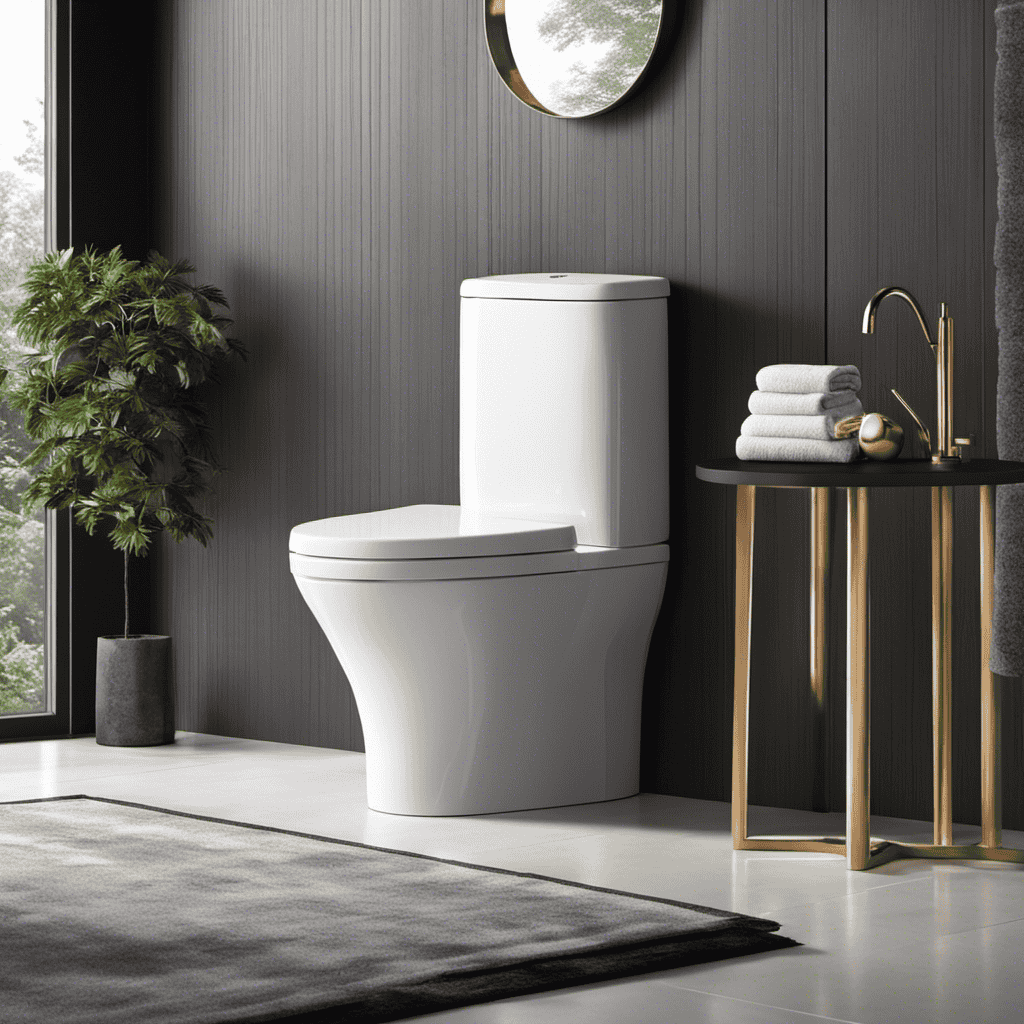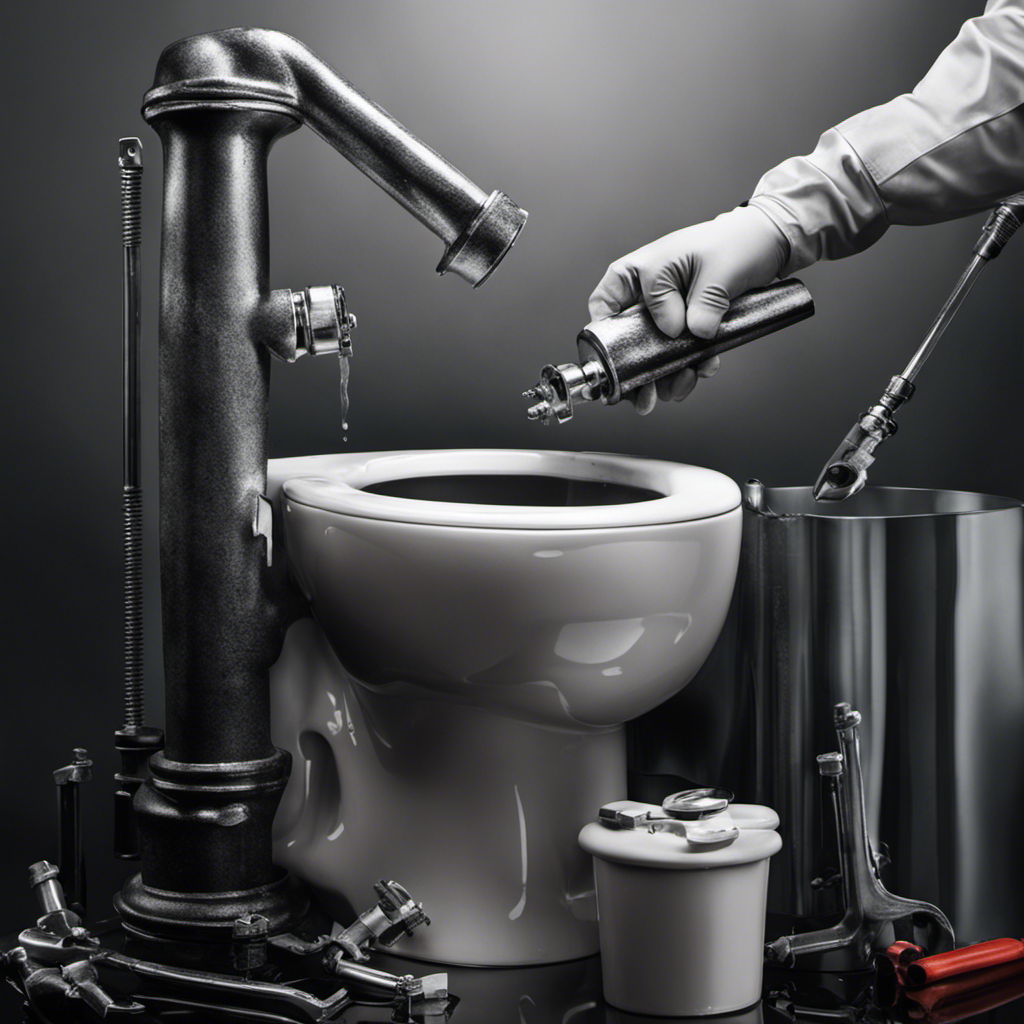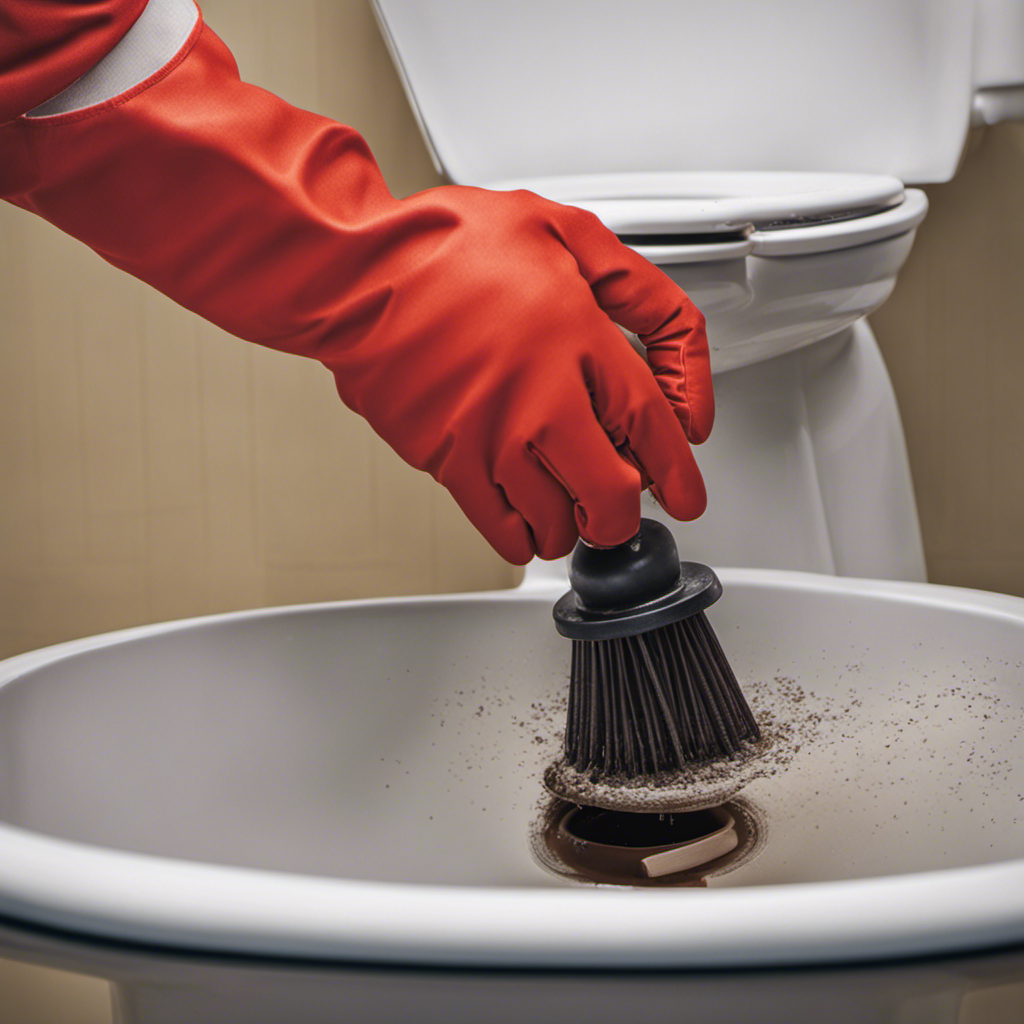Have you ever wondered how long it takes to replace a toilet? Well, let me break it down for you in a clear and concise manner.
In this article, I will guide you through the step-by-step process of replacing a toilet. This includes gathering the necessary materials and tools, removing the old toilet, preparing the area for installation, installing the new toilet, and completing the final touches.
So, get ready to roll up your sleeves and tackle this plumbing project efficiently and confidently!
Key Takeaways
- Measure the rough-in distance and consider bowl shape, height, and water efficiency when choosing a toilet
- Gather essential tools and materials such as wrench, screwdriver, wax ring, and new toilet bolts
- Shut off the water supply, flush the toilet, and disconnect the water supply line before removing the old toilet
- Thoroughly clean the area, check for damages, and install a new wax ring on the flange before installing the new toilet
Gathering Materials and Tools
Before you start, make sure you’ve gathered all the necessary materials and tools.
Choosing the right toilet is crucial for a smooth toilet replacement process. Firstly, measure the rough-in distance to ensure the new toilet will fit properly. Consider factors such as bowl shape, height, and water efficiency to meet your preferences and needs.
Additionally, gather the essential tools for the installation, including a wrench, screwdriver, wax ring, and new toilet bolts. It’s also a good idea to have a bucket and towels on hand for any potential leaks or spills.
By having all the necessary materials and tools ready, you can ensure a seamless toilet replacement process.
Now, let’s move on to removing the old toilet.
Removing the Old Toilet
To start the process, you’ll need to take off the lid of the toilet tank. Once the lid is removed, you can begin the process of removing the old toilet.
The first step is to shut off the water supply to the toilet by turning the valve located behind the toilet counterclockwise. Next, flush the toilet to remove any remaining water in the tank and bowl. Now you can disconnect the water supply line from the bottom of the tank using an adjustable wrench. Be sure to have a bucket handy to catch any water that may still be in the line.
Once the water supply line is disconnected, you can remove the nuts or bolts securing the toilet to the floor. Carefully lift the toilet off the floor and place it on a tarp or old towels to prevent any water or debris from spreading.
When disposing of the old toilet, you have a few options. You can check with your local waste management facility to see if they accept toilets for disposal, or you can contact a professional waste disposal service. It’s important to consider potential issues with disposing of a toilet, such as its weight and size.
Now that the old toilet is removed, you can move on to preparing the area for installation, which we will discuss next.
Preparing the Area for Installation
Once you’ve cleared the area and gathered all the necessary tools, it’s time to start preparing the space for installation. Here are the steps you need to follow:
-
Use cleaning supplies such as disinfectant and a toilet brush to thoroughly clean the area where the old toilet was removed. This will ensure a clean and sanitary installation.
-
Make sure to wear gloves and protective eyewear to protect yourself from any potential hazards.
-
Check the flange and floor for any damages or cracks. If any issues are found, they should be addressed before proceeding with the installation.
-
Install a new wax ring on the flange to create a watertight seal between the toilet and the floor.
Installing the New Toilet
Make sure you’ve gathered all the necessary tools and have the new toilet ready to go. Before installing the new toilet, it’s important to troubleshoot any issues with the old one. Check for leaks, clogs, or any other problems that may have led to the need for replacement. Once you’ve addressed any issues, it’s time to choose the right toilet model. Consider factors like the size of your bathroom, water efficiency, and personal preference. To help you visualize the options, here is a table comparing different toilet models:
| Model | Size | Water Efficiency | Price |
|---|---|---|---|
| Standard | Medium | Moderate | Affordable |
| Compact | Small | High | Mid-range |
| Dual Flush | Medium | Very High | High-end |
| Wall-mounted | Small | Moderate | Expensive |
Once you’ve made your decision and have the new toilet in hand, follow the manufacturer’s instructions for a smooth installation process.
Testing and Finishing Touches
After troubleshooting any issues with the old toilet, it’s time to test the new one to ensure it is functioning properly. Here are some testing techniques and troubleshooting tips to help you with this process:
-
Fill and Flush Test: Fill the toilet tank with water and flush to check if the water is flowing smoothly and the bowl is properly refilling.
-
Leak Detection: Inspect the base of the toilet and the connections for any signs of leaks. Use dye tablets to detect hidden leaks.
-
Toilet Seat Stability: Sit on the toilet seat and check for any wobbling or instability. Tighten the seat bolts if necessary.
-
Flapper Adjustment: Adjust the flapper chain length to ensure a proper seal and prevent water leakage.
Frequently Asked Questions
How Much Does It Cost to Hire a Professional to Replace a Toilet?
To hire a professional for toilet replacement, costs vary based on factors like location and complexity of the job. However, DIY toilet installation tips can help save money. Consider the benefits of professional expertise versus the cost.
Can I Reuse the Wax Ring From the Old Toilet When Installing a New One?
When replacing a toilet, reusing the wax ring from the old one is like using a worn-out shoe for a marathon. It’s not recommended. Opt for a new wax ring or consider alternative options for a secure and leak-free installation.
What Should I Do if the Toilet Flange Is Damaged?
If the toilet flange is damaged, I would need to repair or replace it before installing a new toilet. This ensures a proper seal and prevents leaks. Professional help may be required for complex repairs.
How Do I Choose the Right Size and Style of Toilet for My Bathroom?
When choosing a toilet, consider the size and style that best fits your bathroom. Look for installation tips and common toilet problems to avoid. It’s important to make an informed decision for a successful replacement.
Are There Any Specific Building Codes or Regulations I Need to Follow When Replacing a Toilet?
When it comes to replacing a toilet, it’s important to follow building code regulations and toilet replacement guidelines. These ensure proper installation and functionality. Failure to adhere to these guidelines can lead to costly repairs and potential safety hazards.
Conclusion
In conclusion, replacing a toilet is a task that requires careful preparation and execution. Just like how a broken toilet disrupts the flow of our daily lives, fixing it symbolizes restoring order and functionality.
By following the steps outlined in this guide, you can confidently tackle this project and experience the satisfaction of a job well done.
Remember, a functional toilet is not just a necessity, but a symbol of a well-maintained home. So don’t hesitate to take on this task and restore harmony to your bathroom.










